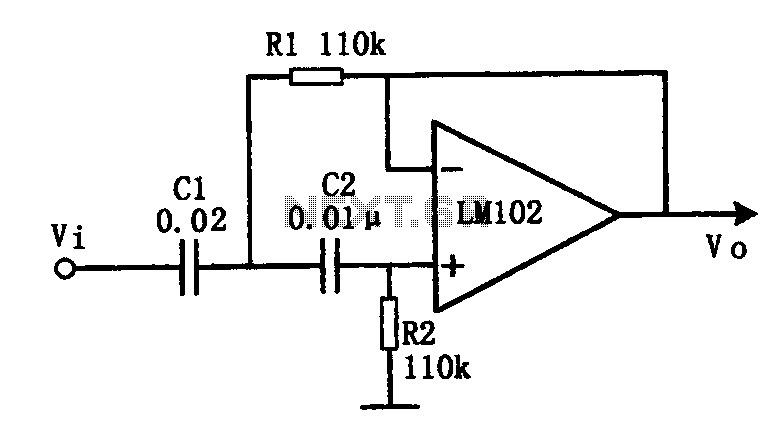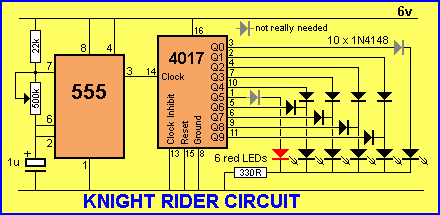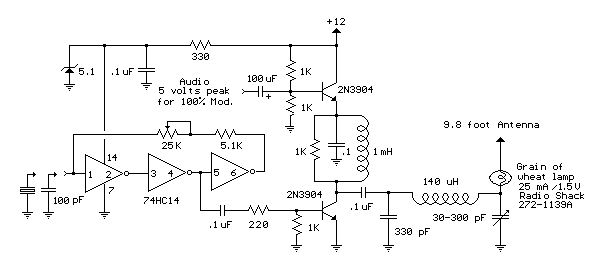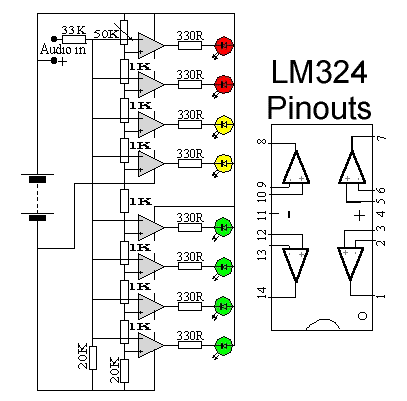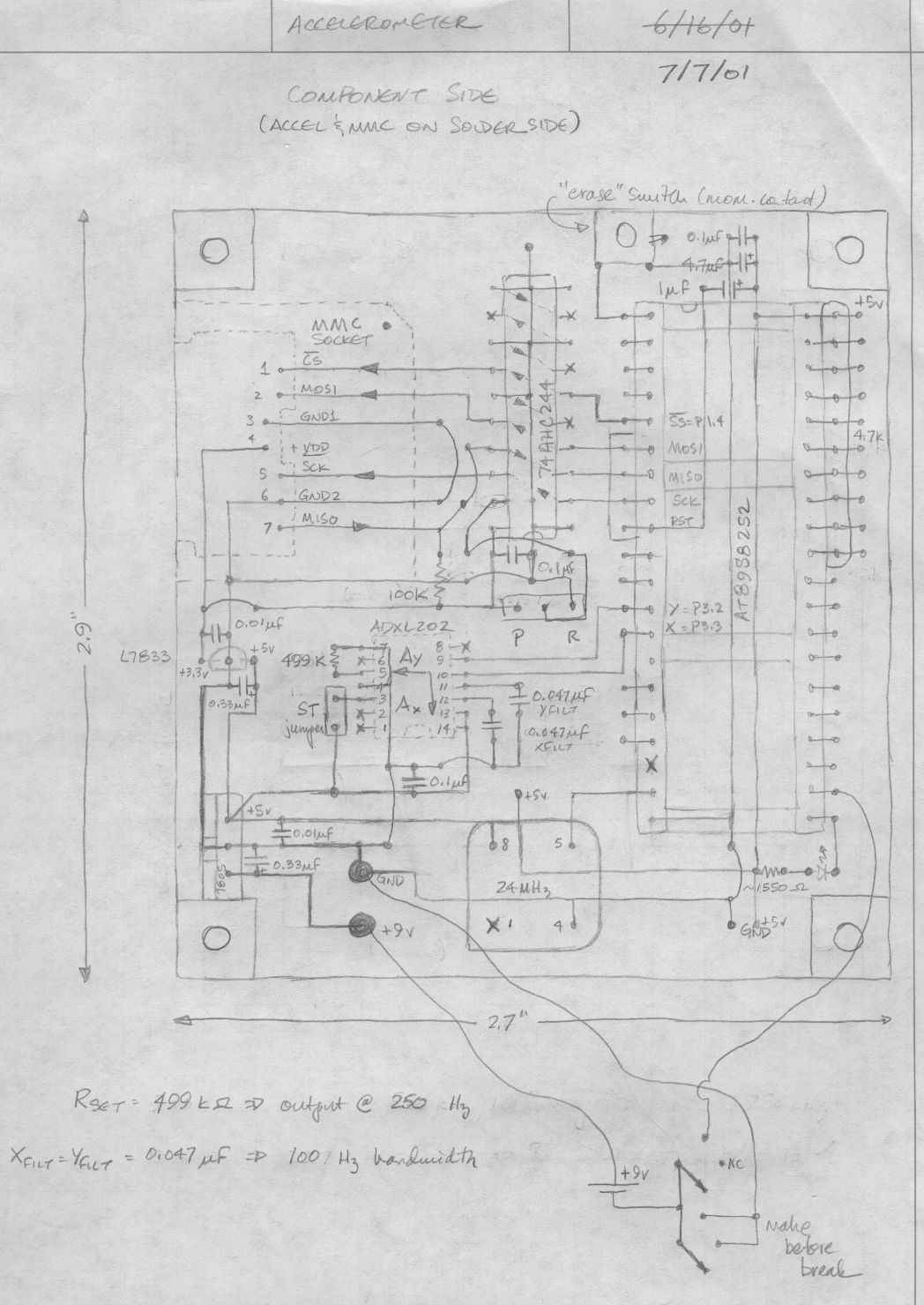
Lite + Xtall RX V9.0 Schematic
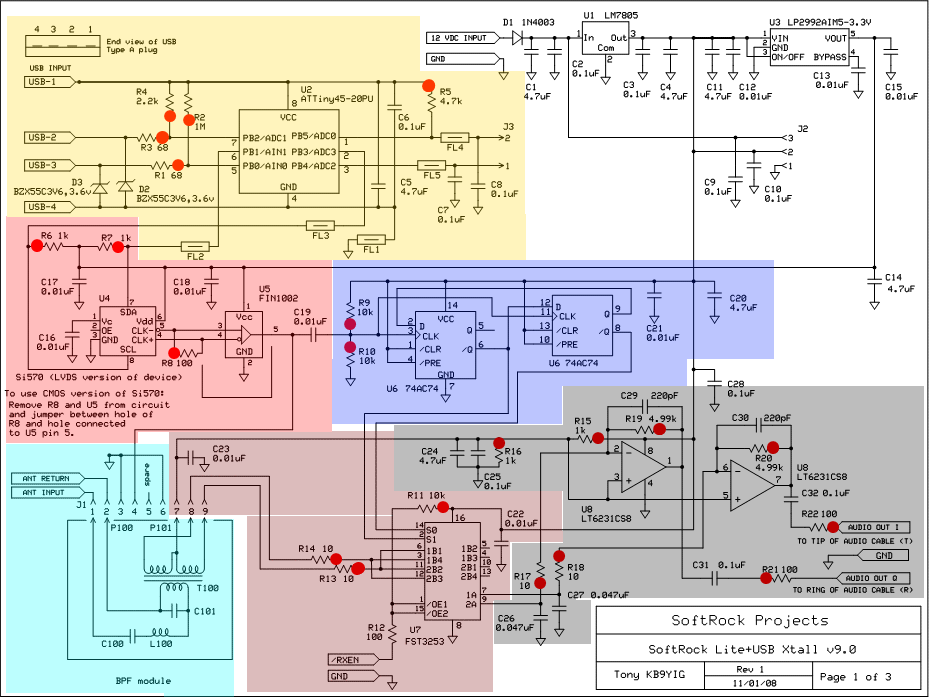
Below is the main schematic of the RX + Xtall V9.0 SDR. The schematic has been divided into separate stages, each covered in its own page of build instructions on this website. Each shaded area can be clicked to view the corresponding stage builder's notes. This receiver is based on the classic "direct conversion" receiver design, which mixes incoming RF down to audio frequencies by beating the RF against a local oscillator, resulting in mixer products that fall within the audio frequency range. Unlike traditional DC receivers, the SDR does not tune the local oscillator's frequency to match a desired RF signal. Instead, it generates a fixed "center frequency." The advantage of an SDR design is that the operator can visualize all activity within the design bandwidth on a single display and can immediately select any interesting signal within that spectrum. This version (9.0) of the Softrock SDR receiver features a programmable local oscillator (U4 in the schematic), allowing the operator to choose any desired center frequency. Frequency selection is performed in an SDR program on the PC and is executed via a USB connection and control circuit (U2 in the schematic). The local oscillator is the Silabs Si570, available in two versions: LVDS, which requires U5, a high-speed differential receiver that converts LVDS levels (with a typical differential input threshold of 100 mV) to LVTTL signal levels. While it may be tempting to use the frequency programmability to tune the oscillator directly to a specific frequency, the SDR design for Version 9.0 adheres to the SDR paradigm of providing a "chunk" of spectrum that is simultaneously detected and processed on the PC. To achieve this, the SDR hardware must present the "chunk" of spectrum as two down-converted segments of AF in quadrature, known as the "I" (in-phase) and "Q" (quadrature) outputs. Most SDR designs utilize a center frequency, with the "chunk" of received frequencies arrayed on either side within the RF spectrum. For any desired center frequency, the oscillator (U4 - red shaded area) generates a frequency equal to four times the desired center frequency. This signal is sent to a divider chain (U6 - blue shaded area) that divides the input by four, introducing phase shifts to ensure quadrature. The divider chain outputs two signals at the desired center frequency and one-fourth of the input frequency, with the two center frequency signals being in quadrature—identical in amplitude but differing in phase by 90 degrees. These signals are then directed to the mixer stage (U7 - green shaded area), where they mix with the RF input from the bandpass filter stage (BPF Module, blue-green shaded area), resulting in two down-converted products that represent quadrature AF analogs of the incoming RF signals. Consequently, the mixer products can vary in audio frequency from zero to a theoretically high audio frequency. It is noteworthy that the pluggable bandpass filters may be replaced by a new switchable HF BPF board, which implements four switchable BPFs on a single board that can be manually or, once firmware is updated, USB-controlled. These AF signals are then amplified using an inverting operational amplifier (U8 - grey shaded area) to produce the I and Q signals for digitization by the PC's sound card. The "tuning," image rejection, demodulation, AFC, and other advanced radio functions are executed in the software component of the Software Defined Radio. The software enables extraordinary selectivity in the direct conversion hardware, which is typically known for its high sensitivity but poor selectivity. It allows the display of the audio frequency manifestations of the RF "chunk" on a calibrated display.
The RX + Xtall V9.0 SDR schematic is a sophisticated representation of a software-defined radio receiver that employs advanced signal processing techniques to enhance user experience and operational flexibility. The design emphasizes modularity, allowing for easy upgrades and modifications through the use of interchangeable components such as the bandpass filters. The programmable local oscillator (U4) plays a critical role in defining the center frequency, which is essential for the effective operation of the SDR. By generating a frequency that is four times the desired center frequency, the design ensures that the signals are properly down-converted to the audio frequency range.
The implementation of the divider chain (U6) is crucial for maintaining the phase relationship between the I and Q signals. This phase relationship is fundamental for accurate demodulation and processing of the received RF signals. The mixer stage (U7) is designed to efficiently combine the RF input with the local oscillator signals, producing the desired quadrature outputs that facilitate further processing.
The integration of the USB control circuit (U2) allows seamless communication between the SDR hardware and the PC software, enabling real-time frequency adjustments and signal processing capabilities. This integration is essential for modern SDR applications, where user interaction and control are paramount.
Overall, the RX + Xtall V9.0 SDR schematic exemplifies the principles of modern SDR technology, showcasing a blend of hardware and software that allows for enhanced performance and flexibility in the reception and processing of radio signals.Below is the main schematic of the RX + Xtall V9. 0 SDR. The schematic has been partitioned into separate stages, each of which is covered in a separate page of build instructions in this web site. You can click on each shaded area and view the corresponding stage builders` notes. This receiver is patterned on the classic "direct conversion" receiv er, in that it mixes incoming RF down to audio frequencies by beating the RF against a Local oscillator such that the mixer products are in the audio frequency range. Unlike the traditional DC receiver, the SDR does not "tune" the local oscillator`s frequency to beat up against a desired RF signal.
Instead, the local oscillator generates a fixed, "center frequency. The beauty of an SDR design is that the operator can, in one display, "see" all activity within the design bandwidth and immediately "click" on any interesting signal within that spectrum. This version (9. 0) of the Softrock SDR receiver has a programmable local oscillator (U4 in the schematic below), permitting the operator to select any desired center frequency.
Frequency selection is done in a SDR program on the PC, and implemented via a USB connection and control circuit (U2 in the schematic below). The local oscillator is the Silabs Si570, of which there are two versions: LVDS - which requires U5, a high-speed, differential receiver that translates LVDS levels, with a typical differential input threshold of 100 mV, to LVTTL signal levels While it would be tempting to use that frequency progammability to directly tune the oscillator to a specific desired frequency, the SDR design for Version 9.
0 follows the SDR paradigm of providing a "chunk" of spectrum that is simultaneously detected and presented for processing in the PC. To accomplish this, the SDR hardware must present the "chunk" of spectrum as two down-converted chunks of AF in quadrature, the "I (in-phase) and the "Q" (quadrature) outputs.
Most SDR designs use the concept of a center frequency, on either side of which are arrayed the "chunk" of received frequencies in a "chunk" of the RF spectrum. For any desired center frequency, the oscilllator (U4 - red shaded area below) generates a frequency equal to 4 times the desired center frequency.
This signal is fed to a divider chain (U6 - blue shaded area below) that divides the input by 4 (with attendant phase shifts to achieve quadrature). The divider chain then outputs two signals at the desired center frequency and one-fourth of the input frequency.
These two center frequency signals are in quadrature - each identical, differing only in phase by 90 degrees. The two center frequency signals are passed to the mixer stage (U7 - green shaded area below), where they are mixed with and beat against the RF input from the band pass filter stage (BPF Module, blue-green shaded area below), resulting in two down-converted products that are quadrature AF analogues of the incoming RF signals.
As a result, the mixer products can vary in audio frequency from zero to +/- some theoretically high audio frequency. (Note: the pluggable bandpass filters may be replaced by the new switchable HF BPF board, which implements 4 switchable BPFs on a single board, which can be manually switched or (once firmware is updated) switched via USB control.
) These AF signals are then amplified in an inverting operational amplifier (U8 - grey shaded area below) to produce the I and Q signals for consumption and digitization by the PC`s sound card. The "tuning", image rejection, demodulation, AFC and other neat radio functions happen in the software part of the Software Defined Radio.
It is the magic of Software that makes for the extraordinarily high selectivity in the direct conversion hardware (which is notorious for great sensitivity but terrible selectivity). The software allows the display of the audio frequency manifestations of the RF "chunk" on a display calibrated in the R
🔗 External reference
The RX + Xtall V9.0 SDR schematic is a sophisticated representation of a software-defined radio receiver that employs advanced signal processing techniques to enhance user experience and operational flexibility. The design emphasizes modularity, allowing for easy upgrades and modifications through the use of interchangeable components such as the bandpass filters. The programmable local oscillator (U4) plays a critical role in defining the center frequency, which is essential for the effective operation of the SDR. By generating a frequency that is four times the desired center frequency, the design ensures that the signals are properly down-converted to the audio frequency range.
The implementation of the divider chain (U6) is crucial for maintaining the phase relationship between the I and Q signals. This phase relationship is fundamental for accurate demodulation and processing of the received RF signals. The mixer stage (U7) is designed to efficiently combine the RF input with the local oscillator signals, producing the desired quadrature outputs that facilitate further processing.
The integration of the USB control circuit (U2) allows seamless communication between the SDR hardware and the PC software, enabling real-time frequency adjustments and signal processing capabilities. This integration is essential for modern SDR applications, where user interaction and control are paramount.
Overall, the RX + Xtall V9.0 SDR schematic exemplifies the principles of modern SDR technology, showcasing a blend of hardware and software that allows for enhanced performance and flexibility in the reception and processing of radio signals.Below is the main schematic of the RX + Xtall V9. 0 SDR. The schematic has been partitioned into separate stages, each of which is covered in a separate page of build instructions in this web site. You can click on each shaded area and view the corresponding stage builders` notes. This receiver is patterned on the classic "direct conversion" receiv er, in that it mixes incoming RF down to audio frequencies by beating the RF against a Local oscillator such that the mixer products are in the audio frequency range. Unlike the traditional DC receiver, the SDR does not "tune" the local oscillator`s frequency to beat up against a desired RF signal.
Instead, the local oscillator generates a fixed, "center frequency. The beauty of an SDR design is that the operator can, in one display, "see" all activity within the design bandwidth and immediately "click" on any interesting signal within that spectrum. This version (9. 0) of the Softrock SDR receiver has a programmable local oscillator (U4 in the schematic below), permitting the operator to select any desired center frequency.
Frequency selection is done in a SDR program on the PC, and implemented via a USB connection and control circuit (U2 in the schematic below). The local oscillator is the Silabs Si570, of which there are two versions: LVDS - which requires U5, a high-speed, differential receiver that translates LVDS levels, with a typical differential input threshold of 100 mV, to LVTTL signal levels While it would be tempting to use that frequency progammability to directly tune the oscillator to a specific desired frequency, the SDR design for Version 9.
0 follows the SDR paradigm of providing a "chunk" of spectrum that is simultaneously detected and presented for processing in the PC. To accomplish this, the SDR hardware must present the "chunk" of spectrum as two down-converted chunks of AF in quadrature, the "I (in-phase) and the "Q" (quadrature) outputs.
Most SDR designs use the concept of a center frequency, on either side of which are arrayed the "chunk" of received frequencies in a "chunk" of the RF spectrum. For any desired center frequency, the oscilllator (U4 - red shaded area below) generates a frequency equal to 4 times the desired center frequency.
This signal is fed to a divider chain (U6 - blue shaded area below) that divides the input by 4 (with attendant phase shifts to achieve quadrature). The divider chain then outputs two signals at the desired center frequency and one-fourth of the input frequency.
These two center frequency signals are in quadrature - each identical, differing only in phase by 90 degrees. The two center frequency signals are passed to the mixer stage (U7 - green shaded area below), where they are mixed with and beat against the RF input from the band pass filter stage (BPF Module, blue-green shaded area below), resulting in two down-converted products that are quadrature AF analogues of the incoming RF signals.
As a result, the mixer products can vary in audio frequency from zero to +/- some theoretically high audio frequency. (Note: the pluggable bandpass filters may be replaced by the new switchable HF BPF board, which implements 4 switchable BPFs on a single board, which can be manually switched or (once firmware is updated) switched via USB control.
) These AF signals are then amplified in an inverting operational amplifier (U8 - grey shaded area below) to produce the I and Q signals for consumption and digitization by the PC`s sound card. The "tuning", image rejection, demodulation, AFC and other neat radio functions happen in the software part of the Software Defined Radio.
It is the magic of Software that makes for the extraordinarily high selectivity in the direct conversion hardware (which is notorious for great sensitivity but terrible selectivity). The software allows the display of the audio frequency manifestations of the RF "chunk" on a display calibrated in the R
🔗 External reference
